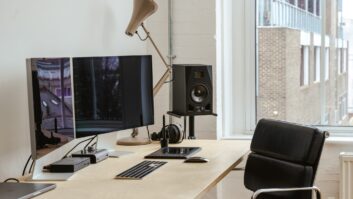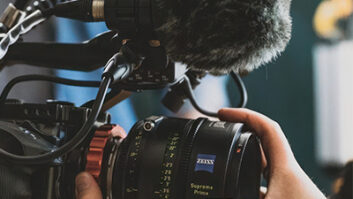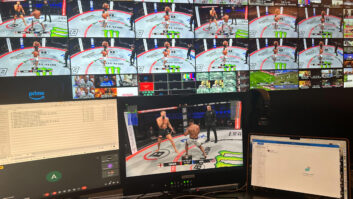
The second series of Channel 4’s observational documentary 24 Hours in A&E is being filmed in HD using almost 100 cameras and with an innovative location-to-edit workflow, writes Adrian Pennington.
The Garden Productions is half way through a six week round-the-clock shoot on location at the A&E department of London’s King’s College Hospital. With facility The Farm it will produce 14 hour-long episodes for transmission later this year.
“The first series was shot SD to SX tape so going HD and tapeless for this series made a massive difference to our approach,” explained Scarlett Ewens, Garden Productions, Managing Director (pictured).
“We immediately started talking to The Farm and camera facility company CTV knowing we needed to streamline the workflow from recording on site through to the edit and to make it as simple and secure as possible.”
Series one used 70 static rigged cameras, but since the hospital’s A&E department had been expanded in the past year it was decided to enlarge coverage to 91 fixed cameras, a mix of 50 Panasonic AW-HE50 and 41 Sony BRC-Z330, all shooting 1080i 50. In addition there are four roving crews with Canon XF305s and two GoPro HD cameras attached to gurneys and wheelchairs to capture travelling shots.
All 91 fixed camera feeds are sent via cable to two custom-built galleries. A director in each gallery cuts up to four mixed streams at any time and these are then recorded directly to Avid Airspeed.
Under supervision of The Farm’s team, the media is immediately captured to Avid Isis via Interplay’s transfer management at 50Mbps MPEG-2 HD 4:2:2, to allow for the isolated capture of all the available microphones. Each vision stream (up to seven in total) also carries eight tracks of audio.
Then the media is copied to LTO-5 tape with associate metadata written in LTFS (Linear Tape File System) and couriered to The Battery, The Farm’s central London data handling facility.
Once there, the LTO-5 tapes are ingested into Unity as near-line storage, and transcoded at 15:1 for editing on Avid.
“Each LTO-5 contains two single streams of 24-hour footage wrapped as Avid .MXF. As all the organisation of media has happened at acquisition, the restore to Unity for editing is fantastically straight forward,” said David Klafkowski, Technical director at The Farm Group.
Added Ewens: “The adoption of this procedure means we are not having to archive once on site and again at the end of production. As the media needs to be transferred from location to the Farm for post we have replaced the traditional use of transport drives with the LTO5 ‘pre-archive’ tapes. These tapes also then act as the shows legal archive copies.”
An alternative would be to record directly to XDCAM HD disc and retaining those as a more traditional archive, but as Klafkowski points out this would have meant the stock cost of approximately eight thousand discs.
“This represents a sea change in the way in which we can run a post operation on location,” he added.
Turnaround may not be 24 hours as it would be for say Big Brother, but the producers have a tight schedule to deliver the programme to C4.
“The sheer volume of data (160TB) and the way the media is being put together is different to a conventional ob-doc so it makes more sense to manage the media at the front end rather than at the back end of production,” says Ewens.
“The Farm are responsible for everything that happens at the end of the cable – for storing and QCing media and transferring all the data to the edit so that the grey area between location and facility house which can lead to problems, is bridged.”
The portable single camera media is also managed and written to LTOs on location, in the same way as the switched feed media.
“This way we know the exact origin of all media back in post, which is not always the case when managing multi-format shows,” says Klafkowski.
Each programme in the series focuses on the dramatic stories of patients treated within the same 24-hour period. From life-threatening brain injuries to splinters and from gun and knife wounds to strokes, 24 Hours in A&E gets up close and personal to patients and medical staff.







